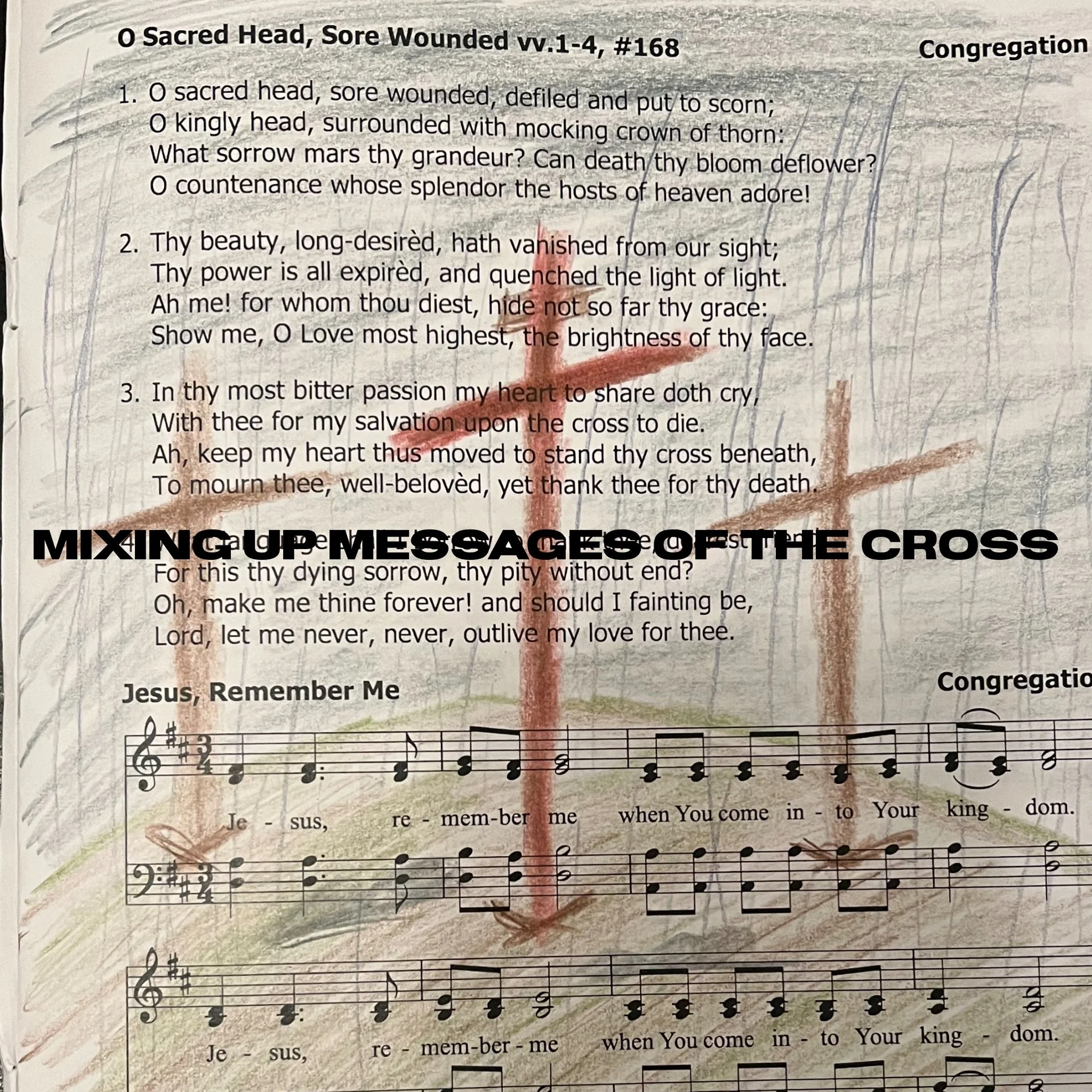Mixing Up Messages of the Cross
I have been thinking about the cross a fair amount this weekend. We are in South Carolina to celebrate 50 years of my Dad doing chalk drawings as part of his ministry (it should go without saying that what I write here represents my thoughts, so any beef should be directed at me). The drawing that he has done more than any other—and that he did this weekend—is a scene of three crosses on the hill of Calvary. The drawing is one of the indelible images in my mind.
Yet the cross is an inescapable image in the American South. It adorns churches on seemingly every block. One can find the cross on billboards and bumper stickers on virtually every interstate and highway across the region.
It was a bumper sticker that began to haunt me these last couple of days. And it was one I had already seen everywhere from Nashville to New York state. There is a decent chance you have seen a variation of it too. It is a series of pictograms that typically leads off with a cross, a gun, and a heart with the message “Pro God, Pro Gun, Pro Life” underneath.
I have never liked this bumper sticker. In fact, I am fairly confident that the sticker probably would have sat wrong with me at virtually every point on my winding faith journey. Yet there was something particularly jarring about seeing the cross and the gun in my hometown as I sat in the car with my family on a weekend where I knew I was going to hear about how the cross was a symbol of God’s great love for us. It kind of broke my heart.
Symbols are complicated and powerful things. They can be used to convey diametrically opposing ideas. At its core, the cross is a symbol of both execution and life. We have taken that paradox and muddled it beyond comprehension. Whereas the cross is a symbol of faith and love in my imagination, it also has been a burning monument to white supremacy for others. Armies have marched and plundered and killed beneath the cross. And for the many who have found themselves unwelcome in churches, the cross can a painful reminder of rejection.
The problem is nothing new. Yet that does not change the fact that it is a problem. The cross and even the concept of Christianity has become intertwined with concepts in the United States that have little to do with the actual faith. They have become symbols of political ideologies and us versus them dynamics that seem fairly un-Christlike. Do we really want to marry a symbol of Christ’s self-giving love to a weapon that kills over 40,000 people in this country each year? Do we really want to wrap the cross in a flag when the gospel is supposed to be something that transcends all of our human-made boundaries?
I realize that I am likely preaching to the choir here, but maybe this gets outside my bubble. Let us be mindful of what we fuse to our faith. Symbols and words like “Christian” are complicated and powerful. Maybe bumper stickers and billboards are not the best medium for such things. There are a lot of contrasting messages in this world about the cross and what it means to follow Jesus. Let’s do our best to not screw up the potentially life-giving images we have been granted.






